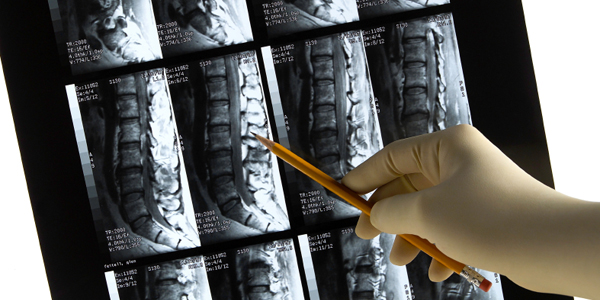Archived in General Spine Surgery
PRP (platelet rich plasma) injection for the back
I recently did a PRP injection for a young teenager with a pars injury (a portion of your lumbar spine that is under high stress with certain sporting activities). We tried rest and time, with minimal relief. Complaints included lower back pain, leg pain, and some numbness in the feet.
What sleep position is good for your back?
That nightly pose can help reduce back and neck pain. Laying flat with a small pillow under your knees is the best position. However, laying flat on your stomach can worsten back pain.
Are NSAIDs safe if you're over 60?
If you're over 60, think twice about taking longterm anti-inflammatories, especially if you have kidney or heart problems. Longterm daily use of NSAIDs (over 30 days) can cause acute kidney injury or damage. Early signs are an elevation of creatinine and/or BUN in your blood. If you are over 60 and on an NSAID, consult your doctor.
Darvocet (propoxyphene) withdrawn from US market
As of November 19, 2010, Xanodyne Pharmaceuticals Inc. the makers of Darvon (propoxyphene) and Darvocet (propoxyphene and acetaminophen) are withdrawing these medications from the US market on the recommendations of the US Food and Drug Administration. New data shows that these medications place patients at risk for serious heart rhythm abnormalities. Propoxyphene is an opioid used to treat moderate pain. All physicians are asked to stop prescribing this medication.
Academy of Orthopaedics recommends against vertebroplasty
The new treatment guidelines has changed as of September 24, 2010. Vertebropasty is a procedure used to surgically treat spinal compression fractures, whereby injecting cement material within the body of a compressed vertebra. These guidelines have been suggested based on research.
Neuromonitoring during Spinal Surgery
During spinal surgery, the spinal cord and nerves are at risk for injury. However, with the use of neuromonitoring, we are able to, in real-time, monitor and record nerve activity to ensure safety.
The aim of neuromonitoring is to evaluate the integrity of the spinal cord and nerves during spinal surgery.
A clear understanding of neurophysiology and anesthesiology is required to appropriately understand and interpret the data. Various anesthetics, changes in body temperature, position, hypotension, and various medications can alter the neuromonitoring response.
I feel that neuromonitoring, including both motor and sensory pathways, is vital in order to perform safe spinal surgery. During your doctors visit, inquire about neuromonitoring, its’ indications and utility.

